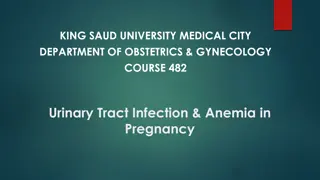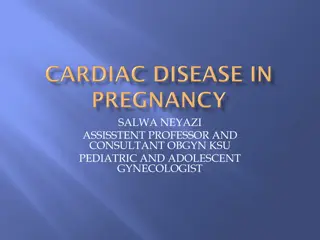Care and Management of Pigs: Pregnancy, Farrowing, and Piglets
Proper care and management of pregnant sows, sow during farrowing, and piglets is crucial for successful pig production. Housing pregnant sows in separate enclosures, providing adequate space, and allowing daily movement are essential. During farrowing, ensuring a suitable environment, preparing feed rations, and supervised assistance are key. In caring for piglets, tasks like removing needle teeth are important to prevent injury during nursing.
Download Presentation

Please find below an Image/Link to download the presentation.
The content on the website is provided AS IS for your information and personal use only. It may not be sold, licensed, or shared on other websites without obtaining consent from the author. Download presentation by click this link. If you encounter any issues during the download, it is possible that the publisher has removed the file from their server.
E N D
Presentation Transcript
Care and Management of pigs (Part-3) Dr. Sanjay Kumar Asst. Prof., Dept. of LPM, BVC, Bihar Animal Sciences University, Patna
Care and management of pregnant sows Care and management of pregnant sows The gestation period of sow is an average of 114 days. Pregnant animals should be housed in groups in separate enclosures and should not be mixed with new animals to avoid fighting which at times may result in abortion. It would also be advisable to house pregnant gilts and sows in separate groups during gestation. About 3 m2of dry housing should be available for each sow. The pregnant animals should be allowed to move about every day in the morning on a free range or a pasture if available. A pasture area is presumed to be clean if a cultivated crop was raised.
Care of sow during farrowing Care of sow during farrowing Farrowing time is the critical time in pig production. Death rate is high during farrowing and the first week after farrowing. Sows may be farrowed in pens equipped with guard rails and a creep space in farrowing crates or in farrowing stalls. The sow should brought to the farrowing pen atleast one week prior to farrowing so that it becomes familiar with the surroundings The feed ration should be made bulky by substituting one- third of the regular ration with wheat bran. The amount of ration fed should also be reduced by one third till the sow farrows.
The feed should not be given 12 hours before farrowing. An attendant should be on hand when the sow farrows. Otherwise many piglets will die. It takes generally 2 to 4 hours for complete farrowing to take place. The piglets should be removed as they are farrowed and kept warm in the creep space until farrowing is complete. Each piglet should be cleaned of all mucus to ensure that the breathing passages are clear. The navel cord should be tied 2- 5 cm away from the navel, cut with a disinfected pair of scissors and the stumps painted with iodine.
Care and management of piglets 1.Removal of needle teeth Piglets are born with four pairs of sharp teeth, with two pairs on each jaw. They are of no practical value to the piglets and they may irritate the sow s udder during nursing or cause injury to other piglets. Clipping of these teeth shortly after birth will prevent the injury of the udder caused by the needle teeth.
2. Anaemia in piglets Anaemia is a common nutritional disease in piglets. This condition can be prevented and cured by supplying iron either orally or by injection. Oral administraion consists of spraying or swabbing the sow s udder with a saturated solution of ferrous sulphate (0.5 kg of ferrous sulphate in 10 litres of hot water). This solution must be applied daily from birth until the piglets start eating creep feed. Intra muscular infection of iron dextran compounds is the more effective method of preventing anaemia.
3.Milk Replacer- Milk replacer consists of one egg yolk thoroughly mixed with one litre of cow milk. This mixture supplies a well balanced diet except for iron.
Raising orphan piglets The death of a sow after farrowing, mastitis, lactation failure of litters larger than the sow is able to raise, result in orphan pigs. If another sow has farrowed within a short time previously, the orphan piglets may be transferred to her. To ensure acceptance of new pigs the sow should be separated from her own litter for short time and then the new piglets are brought to her and a disinfectant or other material sprinkled on all the piglets to mask the odours. Orphan piglets can also be raised with milk replacer.
Castration The male piglets not selected for breeding may be castrated when they are three to four weeks old. Separation of piglets from mother (Weaning) Normal weaning age of piglets is at 8 weeks age. The sow should be separated from the piglets for a few hours each day to prevent stress of weaning and feed is reduced gradually. The piglets should be dewormed after 2 weeks of weaning. The piglets should be gradually shifted from 18 percent protein creep feed to 16 percent grower ration over a period of two weeks. Group of 20 piglets of more or less the same age should be housed in each pen.























